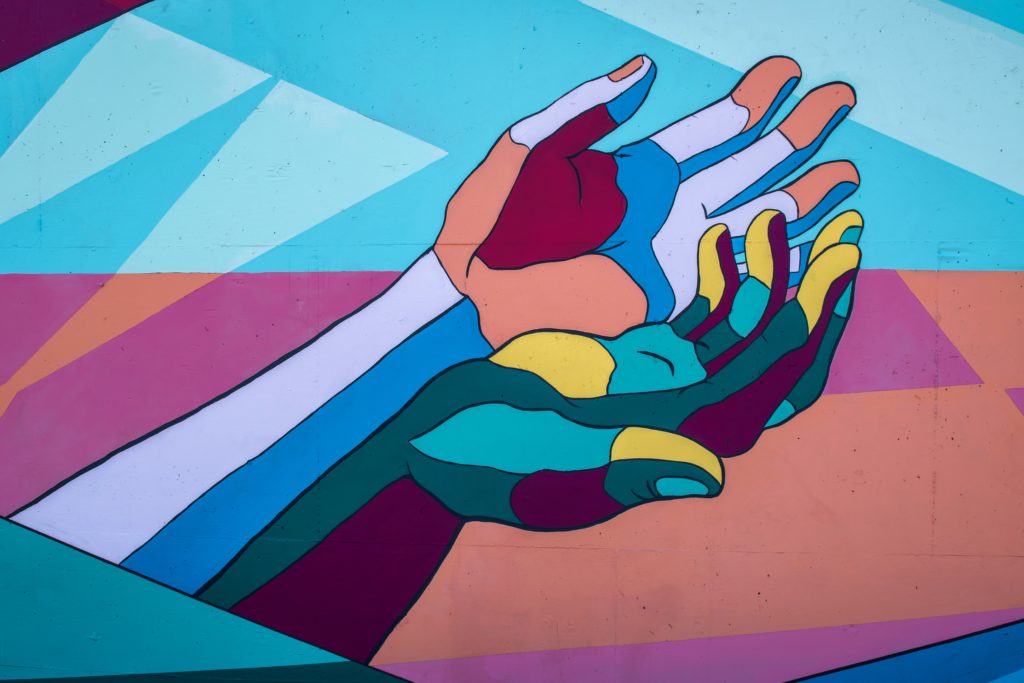What is Colour Therapy?
Colour therapy is an alternative therapy that uses colours and their frequencies to heal physical and emotional problems within the human body. Colour therapy is also known as chromopathy, chromotherapy, or colour healing.
The goal of colour therapy is to correct physiological and psychological imbalances in the human body. For instance, if you’re stressed, colour therapy can help soothe you so that you can regain your psychological balance. If you’re depressed, colour therapy can be used to invigorate you and give you increased energy.
Colour therapy is based on the idea that colours create an electrical impulse in our brain, which stimulates hormonal and biochemical processes in our body that either stimulate or calm us.
What 3rd level courses are available?
Universities and colleges in Ireland are offering Colour Therapy courses in the following subject areas:
- Diploma in Colour Therapy – A great learning journey into the world of Colour and how Colour affects us in every way.
- Diploma in Aura and Chakra Anatomy – This course explores why our energy system can become blocked and methods to clear those blocks as well as a full understanding of the function of the Aura and Chakra systems and how they interact with the physical and emotional self.
Studying Colour Therapy in college
Many Colour Therapy courses take place over 1 year to 4 years depending on the course and modules selected. There are also part-time courses and night courses available so you can be sure to fit in your studies no matter what your schedule is like.
Courses will cover theory work through lectures, assignments, tutorials, and taught modules. Assessments will take place continuously with written examinations and practical assignments combined to achieve a qualification.
You could also consider work experience or a work shadow in the industry. Relevant work experience is a good way of demonstrating a genuine interest in the field and is regarded favourably by employers. Work Experience will not only allow you to obtain a deeper knowledge and understanding of the industry, but it will also give you a chance to do some essential networking with other industry professionals and gain valuable contacts for the future.
Career options
After completing a course in Colour Therapy you will be able to get started in a career that uses specific knowledge of Colours and their healing properties.
Alternative medicine is defined as a range of medical therapies that are used instead of traditional, or mainstream, therapies. Sometimes such therapies are referred to as “complementary” medicine, although there are differences. The field of alternative medicine is becoming more and more accepted by the medical community and patients alike.
Alternative medicine practitioners can find careers in natural medicine clinics, hospitals, and wellness centers. Many choose to go into business for themselves, opening their clinics and wellness centers.
Working hours will depend on whether you are self-employed, employed by a company with set business hours, or if you are contracted to various facilities or companies. The hours are usually full-time but may require work in the evenings, over the weekends, or holidays to suit your client’s needs.
Related jobs include:
- Colour Therapist
- Energy healer
- Yogi
- Ayurveda practice
- Life coach
- Acupuncturist
- Massage therapist
- Chiropractor
- Reiki practitioner
- Doctor of Chinese Medicine
- Tai Chi or Qigong Instructor
- Biofeedback practitioner
- Holistic skincare specialist or aesthetician
- Kinesiology or movement therapy instructor
Further study
After completing a course in Colour Therapy you may choose to pursue further study in a specialist field in Alternative Medicine to increase your knowledge base and skill set in areas such as Ayurvedic practice, guided meditation, or herbal remedies. Naturopaths provide holistic primary care that includes diagnosing patients, prescribing herbal remedies, and performing treatments. Acupuncturists use specialized needles or pressure at specific points on the body to promote healing, reduce pain, and improve overall health.
FAQ
When did Colour Therapy start?
Colour therapy has been around at least since the time of Ancient Egypt. Egyptians believed in the power of light and used different colours of light to promote healing within the human body.
What are the colours associated with the Chakras?
In Indian philosophy, the chakras are considered the centers of spiritual power and the energy field within our bodies. There are seven chakras, and different colour represents each:
· The Root Chakra, located at the base of the spine, is represented by red or red light. This chakra has to do with our grounding and connection with the Earth.
· The Sacral Chakra, located 2 or 3 inches below the navel is represented by orange. This chakra is said to be associated with reproduction, the parts of the physical body like kidneys and adrenals, and pleasure. It is the mind-body chakra.
· The Solar Plexus Chakra, located between the navel and sternum, is represented by yellow. This chakra is associated with parts of the human body like the pancreas, liver, digestive system, and gallbladder, as well as positivity, empowerment, and well-being.
· Green represents the Heart Chakra. It’s associated with parts of the physical body like the heart, lungs, and immune system. It’s associated with energy or the energy field, the nervous system, mental focus, compassion, and empowerment.
· The Throat Chakra is represented by blue or blue light and is associated with the thyroid and metabolism as well as peaceful expression.
· The Third Eye Chakra, located between the eyebrows is represented by indigo and associated with the pituitary gland and pineal gland and influences our sleep cycles, self-esteem, clarity, wisdom, and intuition.
· The Crown Chakra, located at the top of the head is represented by violet and is associated with the pineal gland, light sensitivity, sleep cycles, dreams, clarity, and spirituality.
Where can I study Colour Therapy?
Explore your options here
Did You Know?
· Red and Yellow are said to stimulate hunger while blue suppresses hunger.
· Red is the first colour a baby sees, babies start seeing in colour at around 5 months.
· Pink is thought to curb anger and there have been prisons that use the colour scheme to calm their inmates.
· A colour has been invented that you cannot see; vantablack is so dark that it just appears to be a black hole.
· Colour-blind people have better night vision because the rods in their eyes are more responsive to dim light.












Comments